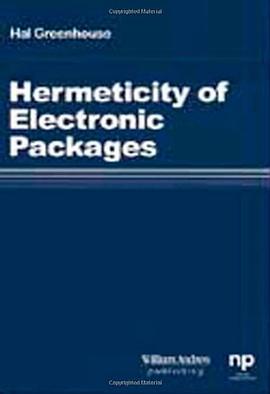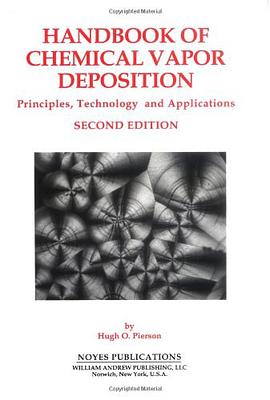

具体描述
Many assume that circular phenomena and mathematical rigour are irreconcilable. Barwise and Moss have undertaken to prove this assumption false. Vicious Circles is intended for use by researchers who use hypersets, although the book is accessible to people with widely differing backgrounds and interests.
The following is a comment from amazon.com
This book discusses recent advances in the general field of set theory. The authors study a variant of ZF in which the axiom of foundation is replaced by a new axiom allowing non-well-founded sets. Just as the naturals can be extended to the integers, and the integers to the rationals, and the reals to the complex numbers, in each case by positing new numbers that are the solutions to a class of equations, so this book posits an extension to any model of set theory consisting of the solutions to a class of (systems of) equations having no solutions in ZF. The simplest example is the equation
x = {x},
whose solution,
x = {{{{...}}}} (infinitely deep)
is not permitted in ZF, but exists and is unique in the authors' theory.
The purpose of this extension to ZF is to create a set theory in which certain circular or infinite phenomena from computer science and other fields, e.g. cyclic data streams, can be much more directly modeled than is now possible in ZF. Currently in ZF in order to represent a cyclic data stream one has to develop the aparatus for natural numbers, and then represent the stream to be a function from the natural numbers into some suitable set representing the type of data. But in the author's set theory the stream could be represented as an unfounded set that is the solution to a simple equation, and many of its properties could then be more easily deduced without resort to arithmetic.
I found this book absolutely fascinating, and I highly recommend it to anyone who has had a course in set theory. The theory in the book is quite elegant and satisfying.
I was delighted to learn that there is still room for new variations of the axioms of set theory, a subject I thought (probably naively) had been fairly static for 60 years.
作者简介
Jon Barwise (1942–2000) was professor of philosophy, mathematics, and computer science at Indiana University and one of the founding members of the Center for the Study of Language and Information (CSLI).
Lawrence S. Moss is professor of mathematics; director of the Program in Pure and Applied Logic; an adjunct professor of computer science, informatics, linguistics, and philosophy; and a member of the Programs in Cognitive Science and Computational Linguistics, all at Indiana University, Bloomington.
目录信息
Part I Background
1. Introduction
1.1 Set theory and circularity
1.2 Preview
2. Background on set theory
2.1 Some basic operations on sets
2.2 Sets and classes
2.3 Ordinals
2.4 The Axiom of Plenitude
2.5 The Axiom of Foundation
2.6 The axioms of set theory
Part II Vicious Circles
3. Circularity in computer science
3.1 Streams
3.2 Labeled transition systems
3.3 Closures
3.4 Self-applicative programs
3.5 Common themes
4. Circularity in philosophy
4.1 Common knowledge and the Conway Paradox
4.2 Other intentional phenomena
4.3 Back to basics
4.4 Examples from other fields
5. Circularity and paradox
5.1 The liar paradox
5.2 Paradox of denotation
5.3 The hypergame paradox
5.4 Russell's paradox
5.5 Lessons from the paradoxes
Part III Basic Theory
6. The solution lemma
6.1 Modeling equations and their solutions
6.2 The solution lemma formulation of AFA
6.3 An extension of the Flat Solution Lemma
7. Bisimulation
7.1 Bisimilar systems of equations
7.2 Strong extensionality of sets
7.3 Applications of bisimulation
7.4 Computing bisimulation
8. Substitution
8.1 General systems of equations
8.2 Substitution
8.3 The general forms of the solution lemma
8.4 The algebra of substitutions
9. Building a model of ZFA
9.1 The Model
9.2 Bisimulation systems
9.3 Verifying ZFC~
94 Verifying AFA
Part IV Elementary Applications
10. Graphs
10.1 Graphs and sets they picture
10.2 Labeled graphs
10.3 Bisimilar graphs
11. Modal Logic
11.1 An introduction to modal logic
11.2 Characterizing sets by sentences
11.3 Baltag's theorems
11.4 Proof theory and completeness
11.5 Characterizing classes by modal theories
12. Games
12.1 Modeling games
12.2 Applications of games
12.3 The hypergame paradox resolved
13. The semantical paradoxes
13.1 Partial model theory
13.2 Accessible models
13.3 Truth and paradox
13.4 The liar
13.5 Reference and paradox
14. Streams
14.1 The set^∞ of streams as a fixed point
14.2 Streams, coinduction and corecursion
14.3 Stream systems
Part V Further Theory
15. Greatest fixed points
15.1 Fixed points of monotone operators
15.2 Least fixed points
15.3 Greatest fixed points
15.4 Games and fixed points
16. Uniform operators
16.1 Systems of equations as coalgebras
16.2 Morphisms
16.3 Solving coalgebras
16.4 Representing the greatest fixed points
16.5 The Solution Lemma Lemma
16.6 Allowing operations in equations
17. Corecursion
17.1 Smooth operators
17.2 The corecursion theorem
17.3 Simultaneous corecursion
17.4 Bisimulation generalized
Part VI Further Applications
18. Some important greatest fixed points
18.1 Hereditarily finite sets
18.2 Infinite binary trees
18.3 Canonical labeled transition systems
18.4 Deterministic automata and languages
18.5 Labeledsets
19. Modal logics from operators
19.1 Some example logics
19.2 Operator logics definced
19.3Characterization theorems
20. Wanted: a strongly extensional theory of classes
20.1 Paradise lost
20.2 What are ZFC adn ZFA axiomatizations of?
20.3 Four criteria
20.4 Classes as façon de pqrler
20.5 The theory of SEC0
20.6 Parting thoughts on the paradoxes
21. Past, present and future
21.1 The past
21.2 The present
21.3 The future
Appendix: definitions and results on operators
Answers to the Exercises
Bibliography
Index
· · · · · · (收起)
读后感
评分
评分
评分
评分
用户评价
相关图书
本站所有内容均为互联网搜索引擎提供的公开搜索信息,本站不存储任何数据与内容,任何内容与数据均与本站无关,如有需要请联系相关搜索引擎包括但不限于百度,google,bing,sogou 等
© 2025 book.quotespace.org All Rights Reserved. 小美书屋 版权所有




















